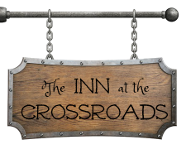“The wedding feast began with a thin leek soup, followed by a salad of green beans, onions, and beets…” (III:74)
Medieval Green Bean, Onion and Beet Salad
Modern Green Bean, Onion and Beet Salad
Our thoughts:
We are huge fans of beetroot, in fact they are one of our favorite veg, so we are thrilled to include them in these recipes! The color of these salads alone make them seem really impressive. They are both very similar in terms of presentation, but the taste varies.
The medieval salad tastes…well…medieval. The taste profile is somewhat weak, the strongest flavor coming from the semi-caramelized red onions. The beets taste as boiled beets should, and the green beans wouldn’t be anything without the salt we put on them. Balsamic vinegar is a must to make this dish passable.
We liked the modern salad far better, with the complexities of the thyme making the dish more interesting to eat. Broiling all the veg brought out the sweetness in each one, especially the beets and onions. The balsamic was less of a necessity on this dish, but it finishes the tastes fantastically.
Overall, if you have to choose, choose modern.














